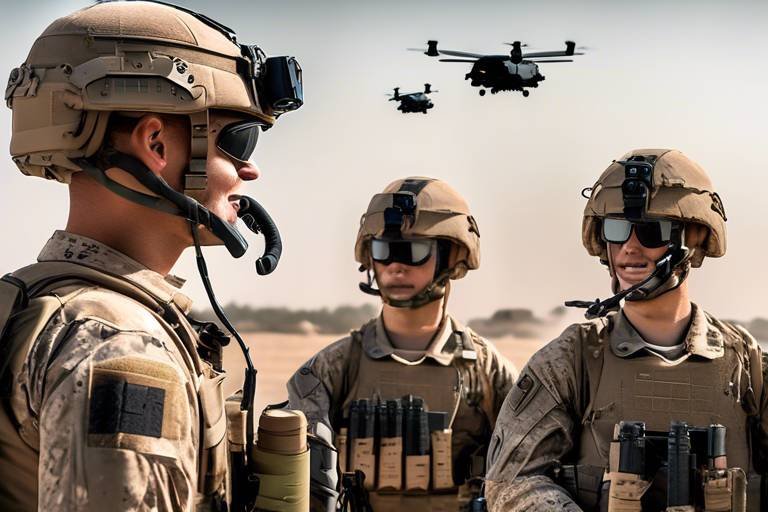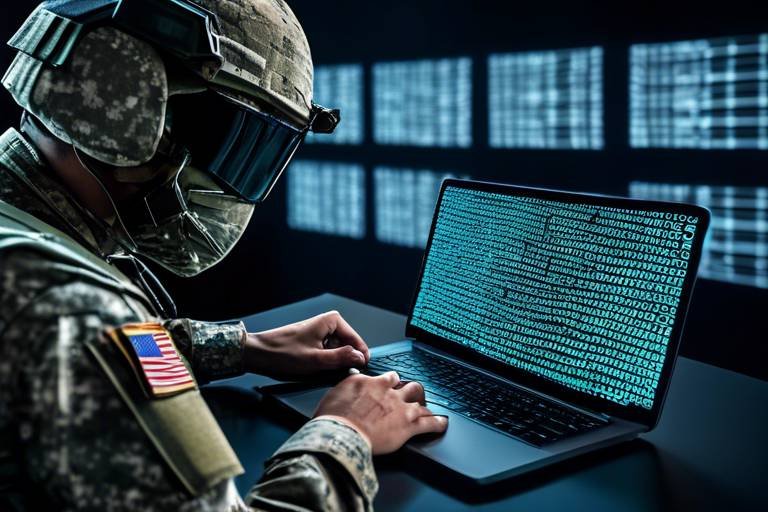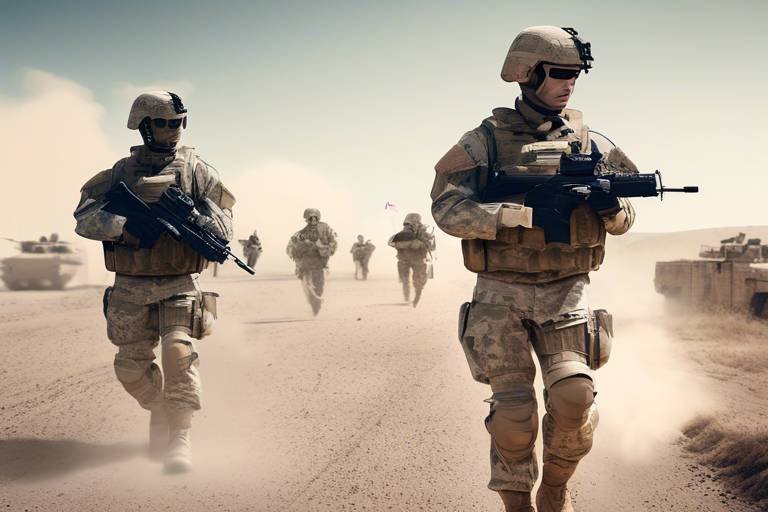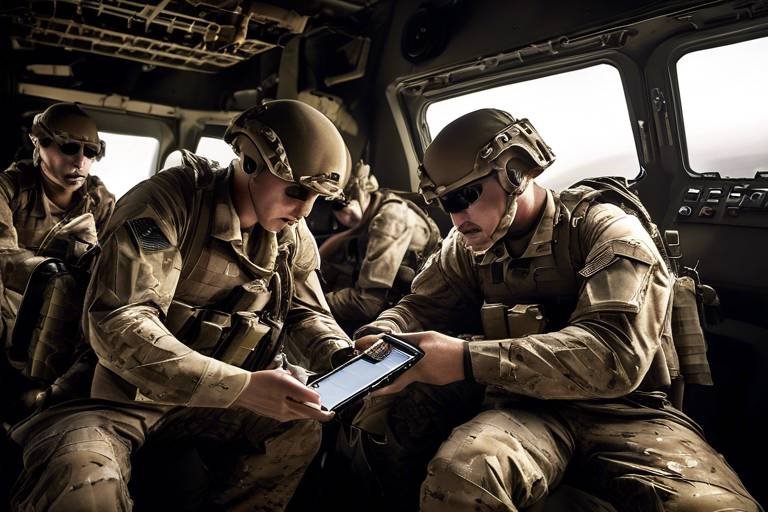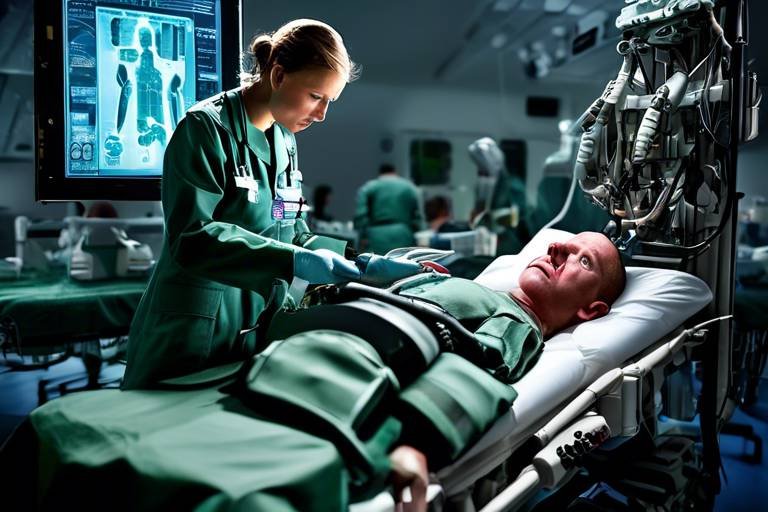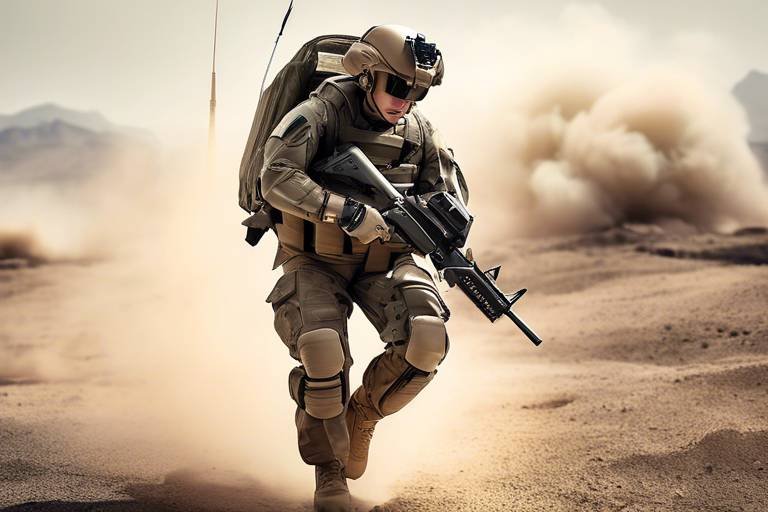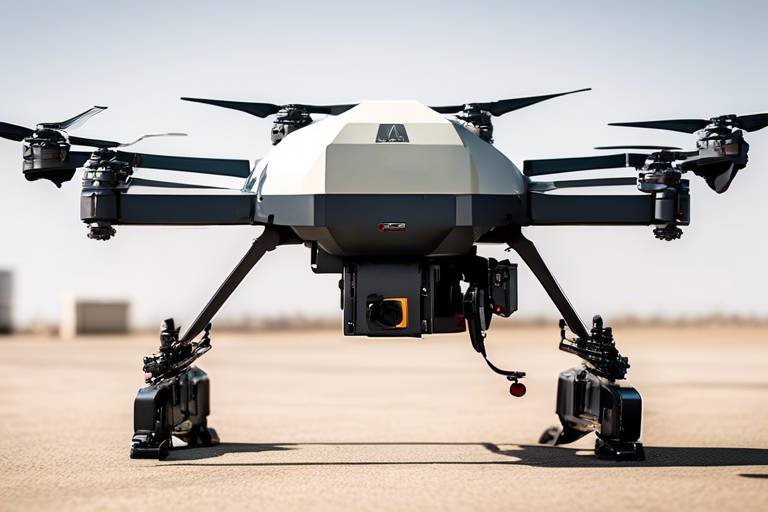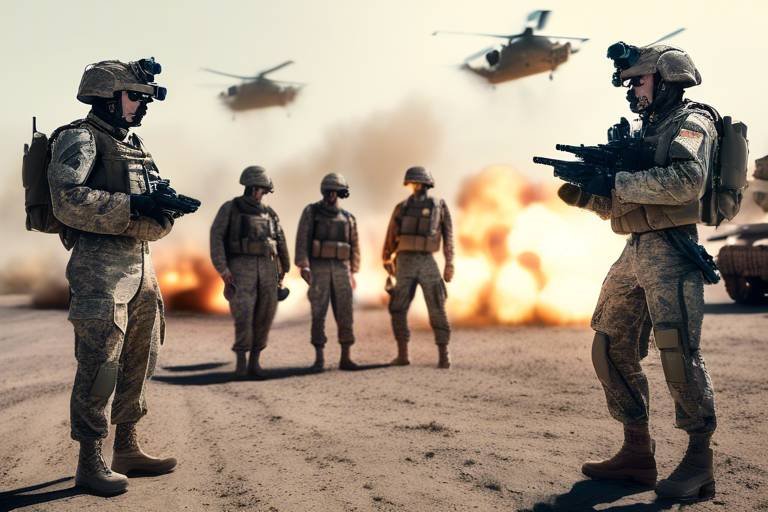Military Use of Robotics in Hazardous Environments
The integration of robotics into military operations has transformed how armed forces approach tasks in hazardous environments. Imagine a world where soldiers can stay out of harm's way while robots take on the most dangerous missions. This is not science fiction; it’s the reality of modern warfare. With advancements in technology, military robotics have become essential tools that enhance operational effectiveness while minimizing risks to human personnel. From bomb disposal to reconnaissance, these machines are designed to operate in environments that would be perilous for humans, making them invaluable assets on the battlefield.
Robotic systems are not just a novelty; they represent a paradigm shift in military strategy. By deploying these machines, military forces can gather intelligence, conduct surveillance, and even engage in combat without putting soldiers' lives at risk. This capability is particularly crucial in areas where the threat of improvised explosive devices (IEDs) is high or in regions where enemy combatants are heavily fortified. The use of robotics allows for a more strategic and calculated approach to military operations, leveraging technology to achieve objectives with greater precision and safety.
As we delve deeper into the applications of military robotics, it becomes evident that they serve a multitude of functions. Whether it’s using unmanned aerial vehicles (UAVs) for surveillance or ground robots for logistics and bomb disposal, each type of robot is tailored to meet specific operational needs. The benefits are clear: enhanced situational awareness, increased operational efficiency, and, most importantly, the preservation of human life. However, the journey into this robotic future is not without its challenges, including technical limitations and ethical concerns that must be addressed to fully realize the potential of these technologies.
Robotic systems are utilized in various military applications, including reconnaissance, bomb disposal, and logistics. Each application showcases how these technologies improve operational effectiveness while minimizing risks to human personnel in dangerous situations. For instance, reconnaissance drones can provide real-time data from hostile territories, allowing commanders to make informed decisions without exposing troops to danger. Similarly, bomb disposal robots can safely neutralize threats, significantly reducing the risk of casualties.
Military robots come in various forms, each designed for specific tasks in hazardous environments. These include unmanned aerial vehicles (UAVs), ground vehicles, and underwater drones. Understanding the different types of robots and their roles is essential for grasping their impact on military operations. Below is a brief overview of these categories:
| Type of Robot | Function |
|---|---|
| Unmanned Aerial Vehicles (UAVs) | Surveillance, reconnaissance, combat support |
| Ground Robots | Bomb disposal, logistics, reconnaissance |
| Underwater Drones | Naval reconnaissance, mine detection |
UAVs play a crucial role in surveillance and reconnaissance missions. These flying robots can cover vast areas quickly and provide real-time data to military commanders. Equipped with high-resolution cameras and advanced sensors, UAVs enhance situational awareness in hostile territories, allowing for strategic planning and execution of military operations. Imagine being able to scout an enemy position without risking a single soldier’s life; that’s the power of UAVs.
Combat support UAVs are equipped for offensive operations. These drones can carry out airstrikes, provide close air support, and gather intelligence on enemy movements. Their tactical advantages are significant, as they enhance mission success rates while reducing the risk to human soldiers. In essence, they act as force multipliers, enabling a smaller number of troops to achieve objectives that would otherwise require larger deployments.
Surveillance UAVs gather intelligence and monitor enemy movements. Their importance cannot be overstated, as they play a vital role in strategic planning and decision-making processes during military operations. By providing continuous monitoring, these drones help commanders anticipate enemy actions and respond effectively, thus maintaining the upper hand in combat scenarios.
Ground robots are essential for tasks like bomb disposal and logistics. Designed to operate in dangerous environments, these robots can navigate rough terrain and perform complex tasks that would be perilous for human soldiers. For example, bomb disposal robots can detect and neutralize explosives, ensuring that troops can move safely through potentially lethal areas. Their design and functionalities are continually evolving, making them more effective and reliable in the field.
The integration of robotics in military operations offers numerous benefits, including enhanced safety for personnel, increased operational efficiency, and improved mission success rates. By deploying robots in hazardous situations, military forces can significantly reduce the risk to human life. This is particularly crucial in bomb disposal operations, where the stakes are incredibly high.
Robotics significantly reduce the risk to human life in hazardous situations. By allowing machines to take on the most dangerous tasks, soldiers can focus on strategy and execution without the constant threat of injury or death. This not only saves lives but also boosts morale among troops, knowing that they have advanced technology to support them in the field.
Robots enhance the speed and efficiency of military operations. Automation and robotic assistance streamline processes, allowing for quicker responses and better resource management in crisis situations. For instance, logistics robots can handle supply distribution, freeing up human personnel for more critical roles. This efficiency translates to more effective military operations overall.
Despite their advantages, military robotics face several challenges, including technical limitations, ethical concerns, and integration issues. Addressing these challenges is crucial for the successful implementation of robotics in military operations. The landscape of warfare is changing, and understanding these hurdles will be essential for future advancements.
Technical challenges such as battery life, navigation, and communication can hinder robotic performance. These limitations impact the effectiveness of military robots in the field. For example, a drone that cannot maintain a charge for extended missions may miss critical opportunities for intelligence gathering. Continuous research and development are necessary to overcome these technical hurdles and enhance the capabilities of military robots.
The use of robotics raises ethical questions regarding decision-making in combat. As we introduce more autonomous systems into warfare, the implications of their actions become increasingly complex. Who is responsible if a robot makes a mistake? These moral dilemmas must be addressed to ensure that the integration of robotics into military operations aligns with ethical standards and human values.
The future of military robotics is promising, with advancements in artificial intelligence and machine learning. Emerging trends and technologies could revolutionize military operations in hazardous environments, enhancing both safety and efficiency.
Integrating artificial intelligence into military robotics enhances their capabilities. AI advancements can improve decision-making, autonomy, and adaptability in complex environments. Imagine robots that can learn from their experiences and adjust their tactics accordingly; this level of sophistication could change the face of warfare.
Collaborative robots, or cobots, work alongside human soldiers. These robots can enhance teamwork and operational effectiveness in hazardous situations, making military missions safer and more efficient. By combining human intuition with robotic precision, military forces can achieve unprecedented levels of success on the battlefield.
- What are military robots used for? Military robots are used for various purposes, including reconnaissance, bomb disposal, and logistics.
- How do UAVs enhance military operations? UAVs provide real-time intelligence and surveillance, allowing for informed decision-making without risking human lives.
- What challenges do military robots face? Military robots face technical limitations, ethical concerns, and integration issues that need to be addressed for effective deployment.
- What is the future of military robotics? The future includes advancements in AI and collaborative robots, which will enhance operational capabilities and safety.
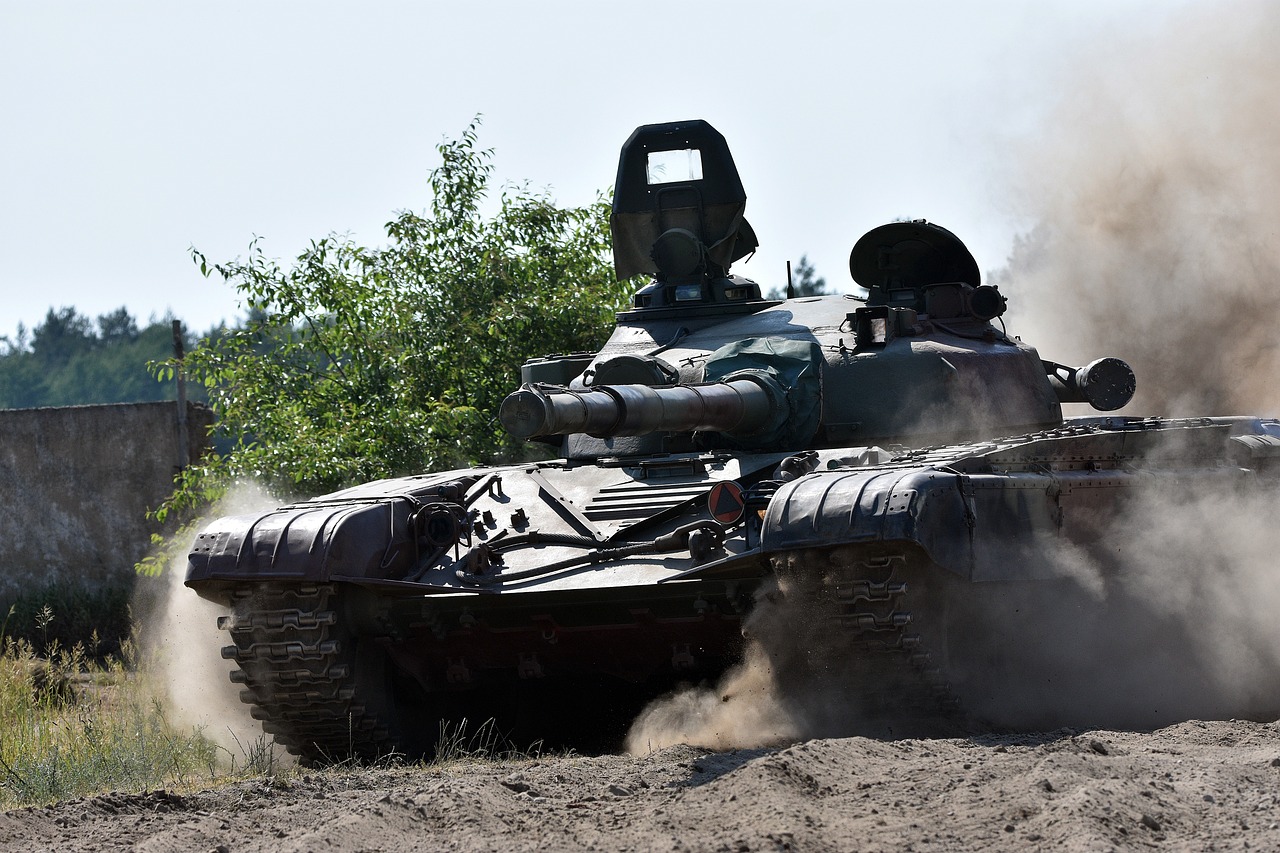
Applications of Military Robotics
In the ever-evolving landscape of modern warfare, the integration of robotics has revolutionized military operations, particularly in hazardous environments. These robotic systems are not just a futuristic concept; they are actively utilized in various military applications, significantly enhancing operational effectiveness while minimizing risks to human personnel. From reconnaissance missions to bomb disposal and logistical support, the applications of military robotics are vast and varied.
One of the primary applications of military robotics is in reconnaissance. Unmanned Aerial Vehicles (UAVs), for example, are deployed to gather real-time intelligence without putting soldiers in harm's way. These flying robots can survey enemy positions, monitor movements, and even provide critical data for strategic planning. The ability to collect information from a safe distance allows military leaders to make informed decisions, which can be the difference between success and failure in a mission.
Another significant application is in bomb disposal. The dangers associated with unexploded ordnance (UXO) and improvised explosive devices (IEDs) are immense. Here, ground robots come into play, equipped with specialized tools to safely disarm or detonate these threats. By deploying robots for such perilous tasks, military forces can protect human lives and minimize the risk of casualties. The effectiveness of these robots in handling explosives is not just about safety; it also enhances the speed of operations, allowing for quicker clearance of areas that may be critical for troop movement.
Logistics is another area where military robotics shine. Automated ground vehicles can transport supplies, equipment, and even personnel in hostile environments. This is particularly useful in scenarios where traditional supply chains are disrupted or under threat. The use of robots for logistics not only ensures that essential resources reach their destinations but also allows human soldiers to focus on more complex tasks that require critical thinking and decision-making.
To summarize, the applications of military robotics are diverse and impactful. They include:
- Reconnaissance: Gathering intelligence safely and efficiently.
- Bomb Disposal: Handling explosives to protect human lives.
- Logistics: Streamlining the transport of supplies and equipment.
As military operations become more complex, the role of robotics will only continue to expand. The integration of these technologies not only enhances the effectiveness of military missions but also significantly reduces the risks faced by personnel in hazardous environments. The future of warfare is undoubtedly intertwined with the advancements in robotic systems, paving the way for safer and more efficient military operations.
Q: What are the main advantages of using robotics in military operations?
A: The primary advantages include increased safety for personnel, enhanced operational efficiency, and improved mission success rates.
Q: How do UAVs contribute to military reconnaissance?
A: UAVs provide real-time intelligence without risking human lives, allowing for better strategic planning and decision-making.
Q: What challenges do military robots face?
A: Challenges include technical limitations, ethical concerns, and integration issues within existing military frameworks.
Q: What is the future of military robotics?
A: The future is promising, with advancements in AI and collaborative robots that will enhance capabilities and operational effectiveness.
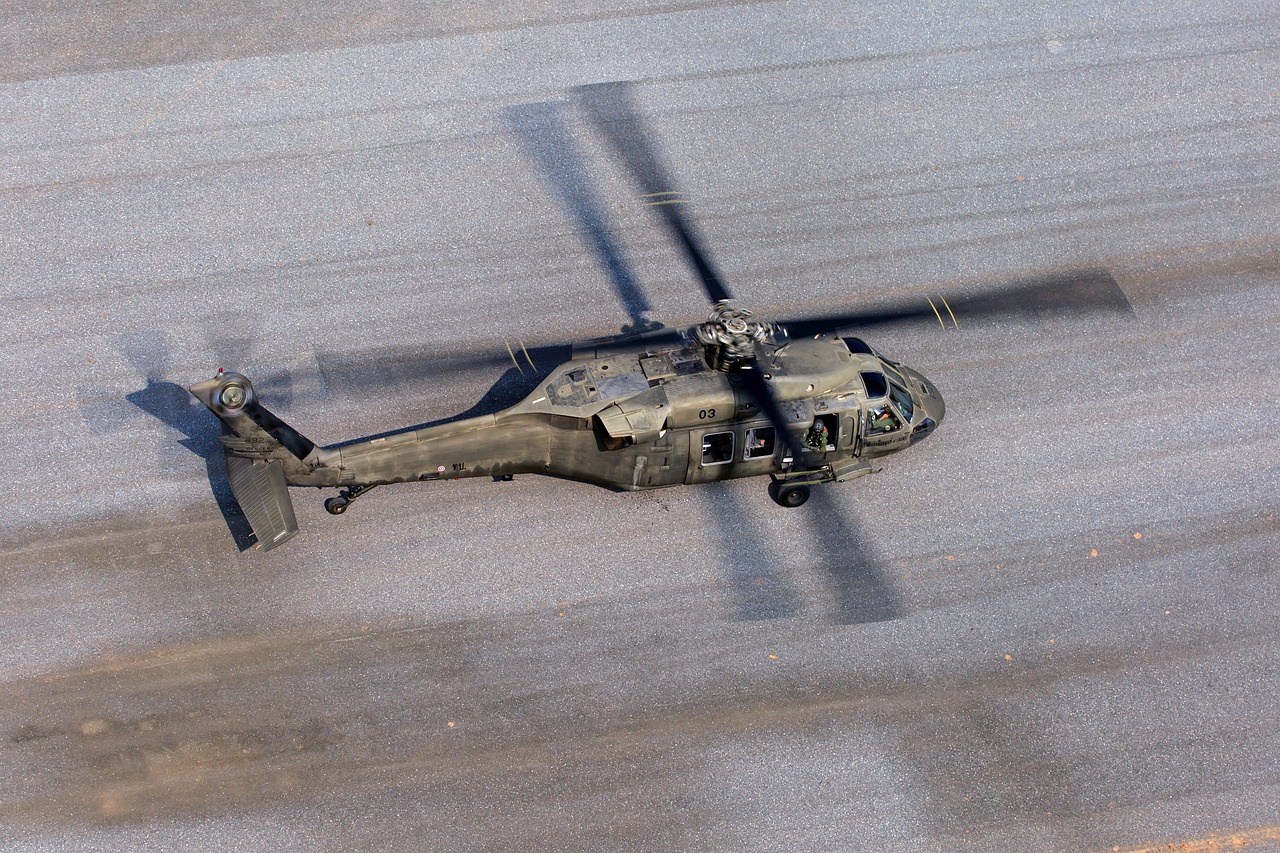
Types of Military Robots
In the ever-evolving landscape of military technology, robots have emerged as indispensable assets, particularly in hazardous environments. These robotic systems are not just futuristic gadgets; they are essential tools that enhance operational effectiveness while safeguarding human personnel. Military robots can be categorized into several types, each designed to perform specific functions that address the unique challenges of combat zones.
One of the most prominent categories is the Unmanned Aerial Vehicles (UAVs). These flying robots are equipped with advanced sensors and cameras, enabling them to conduct reconnaissance missions, gather intelligence, and even engage in combat support. UAVs significantly enhance situational awareness, allowing military commanders to make informed decisions without putting soldiers at risk.
Another vital category is ground robots, which are primarily used for tasks such as bomb disposal and logistics support. These robots are designed to navigate rugged terrains and perform dangerous tasks that would typically endanger human lives. The integration of ground robots into military operations not only increases safety for personnel but also improves efficiency during critical missions.
Additionally, we have underwater drones, which play a crucial role in naval operations. These robots can conduct surveillance, gather intelligence, and even perform search-and-rescue missions in underwater environments. Their ability to operate in challenging conditions makes them invaluable for modern military operations.
To summarize, the main types of military robots include:
- Unmanned Aerial Vehicles (UAVs)
- Ground Robots
- Underwater Drones
As we delve deeper into each type, it's clear that military robotics is not just about replacing human efforts but about enhancing capabilities, improving safety, and ensuring mission success. The future of military operations is undoubtedly intertwined with the advancements in robotic technologies, making them a focal point for strategic planning and execution.
- What are the primary functions of military robots? Military robots are designed for various tasks, including reconnaissance, bomb disposal, logistics support, and surveillance.
- How do UAVs enhance military operations? UAVs provide real-time intelligence and situational awareness, allowing commanders to make informed decisions without risking human lives.
- What are the benefits of using ground robots in combat? Ground robots reduce the risk to personnel, improve operational efficiency, and can perform dangerous tasks that would be unsafe for humans.
- Are underwater drones effective in military operations? Yes, underwater drones are crucial for naval operations, conducting surveillance, and performing search-and-rescue missions in challenging environments.

Unmanned Aerial Vehicles (UAVs)
Unmanned Aerial Vehicles, commonly known as UAVs, have revolutionized the way military operations are conducted, especially in hazardous environments. These flying robots are not just cool gadgets; they are essential tools that provide an array of capabilities that enhance situational awareness and operational effectiveness. Imagine being able to scout a potentially dangerous area without putting a single soldier at risk. That's the magic of UAVs!
One of the primary roles of UAVs in military operations is surveillance and reconnaissance. Equipped with high-resolution cameras and advanced sensors, these drones can gather critical intelligence from the sky. This intelligence is vital for commanders who need to make informed decisions on the battlefield. For instance, UAVs can monitor enemy movements, assess the battlefield terrain, and even detect potential threats before they become a danger to ground troops. The ability to collect data in real-time allows military leaders to adapt their strategies swiftly and effectively.
Moreover, UAVs come in various shapes and sizes, each designed for specific missions. Some are small and nimble, perfect for covert operations, while others are larger and equipped for heavy payloads, capable of carrying out combat support missions. Below is a table showcasing different types of UAVs and their primary functions:
| Type of UAV | Primary Function |
|---|---|
| Reconnaissance UAVs | Gather intelligence and monitor enemy movements |
| Combat Support UAVs | Provide offensive capabilities and tactical support |
| Logistics UAVs | Transport supplies and equipment to troops in the field |
But it's not just about gathering data; UAVs also play a critical role in combat support. Combat support UAVs are equipped with advanced weaponry, allowing them to engage targets from the air. This capability significantly enhances mission success rates while minimizing the risk to human soldiers. They can strike targets with precision, reducing collateral damage and ensuring that operations are conducted with a higher degree of control.
In addition to their operational advantages, UAVs are also a cost-effective solution for military operations. Maintaining a UAV fleet is often less expensive than deploying traditional manned aircraft. This cost efficiency allows military forces to allocate their resources more effectively, investing in other critical areas while maintaining a robust aerial surveillance and combat capability.
In summary, UAVs are a game changer in military operations, offering unparalleled advantages in terms of safety, efficiency, and effectiveness. As technology continues to advance, the potential applications for UAVs will only expand, further enhancing their role in modern warfare.
- What are UAVs used for in the military? UAVs are primarily used for surveillance, reconnaissance, and combat support missions, providing critical intelligence while keeping personnel safe.
- How do UAVs enhance safety for military personnel? By conducting missions remotely, UAVs reduce the risk of human casualties in dangerous environments.
- What types of UAVs are there? There are various types of UAVs, including reconnaissance UAVs, combat support UAVs, and logistics UAVs, each designed for specific functions.
- Are UAVs cost-effective? Yes, operating UAVs is often less expensive than traditional manned aircraft, allowing for better resource allocation in military operations.

Combat Support UAVs
Combat Support UAVs, or Unmanned Aerial Vehicles, have revolutionized modern warfare by providing critical support in various military operations. These advanced flying machines are not just drones; they are sophisticated tools equipped with cutting-edge technology that enhances tactical operations on the battlefield. Imagine having a bird's-eye view of a conflict zone, allowing commanders to make informed decisions without putting soldiers in harm's way. This is the reality that Combat Support UAVs bring to military strategy.
One of the most significant advantages of Combat Support UAVs is their ability to carry out offensive operations with precision. Equipped with advanced sensors and weaponry, these UAVs can engage targets from a distance, minimizing the risk to human soldiers. For instance, they can conduct airstrikes or provide close air support, all while being remotely operated by skilled personnel stationed far from the frontline. This capability not only enhances mission success rates but also significantly reduces the potential for casualties among ground troops.
Moreover, the tactical advantages of Combat Support UAVs extend beyond just firepower. They are equipped with advanced surveillance systems that allow them to gather real-time intelligence. This intelligence is crucial for strategic planning and can influence the outcome of missions. With the ability to monitor enemy movements, assess battlefield conditions, and relay information back to command centers, these UAVs serve as vital assets in maintaining situational awareness in hostile territories.
In addition to their offensive capabilities, Combat Support UAVs can also be utilized for logistical support. They can transport supplies, equipment, and even medical aid to troops in remote or dangerous locations, ensuring that soldiers have the resources they need to complete their missions. This logistical functionality is particularly important in scenarios where traditional supply routes are compromised or unsafe.
As military technology continues to evolve, the role of Combat Support UAVs is likely to expand even further. Innovations in artificial intelligence and machine learning are paving the way for these UAVs to operate with greater autonomy. Imagine a future where UAVs can assess threats and make decisions on their own, all while working in tandem with human operators. This synergy between man and machine could redefine the dynamics of warfare, making operations more efficient and effective.
In conclusion, Combat Support UAVs are not just a technological advancement; they are a game-changer in military operations. By providing tactical advantages, ensuring safety for personnel, and enhancing logistical capabilities, these UAVs are instrumental in modern combat scenarios. As we look to the future, the integration of AI and further advancements in UAV technology will likely continue to transform how wars are fought, ensuring that military forces are better equipped to handle the challenges of hazardous environments.
- What are Combat Support UAVs? Combat Support UAVs are unmanned aerial vehicles designed to provide tactical support in military operations, including surveillance, reconnaissance, and offensive capabilities.
- How do Combat Support UAVs enhance safety for soldiers? By conducting operations remotely, Combat Support UAVs reduce the need for human soldiers to be in dangerous situations, thereby minimizing potential casualties.
- What technologies do Combat Support UAVs use? These UAVs utilize advanced sensors, weaponry, and communication systems to gather intelligence and engage targets effectively.
- Will AI change the future of Combat Support UAVs? Yes, advancements in artificial intelligence are expected to enhance the autonomy and decision-making capabilities of Combat Support UAVs, making them even more effective in the field.
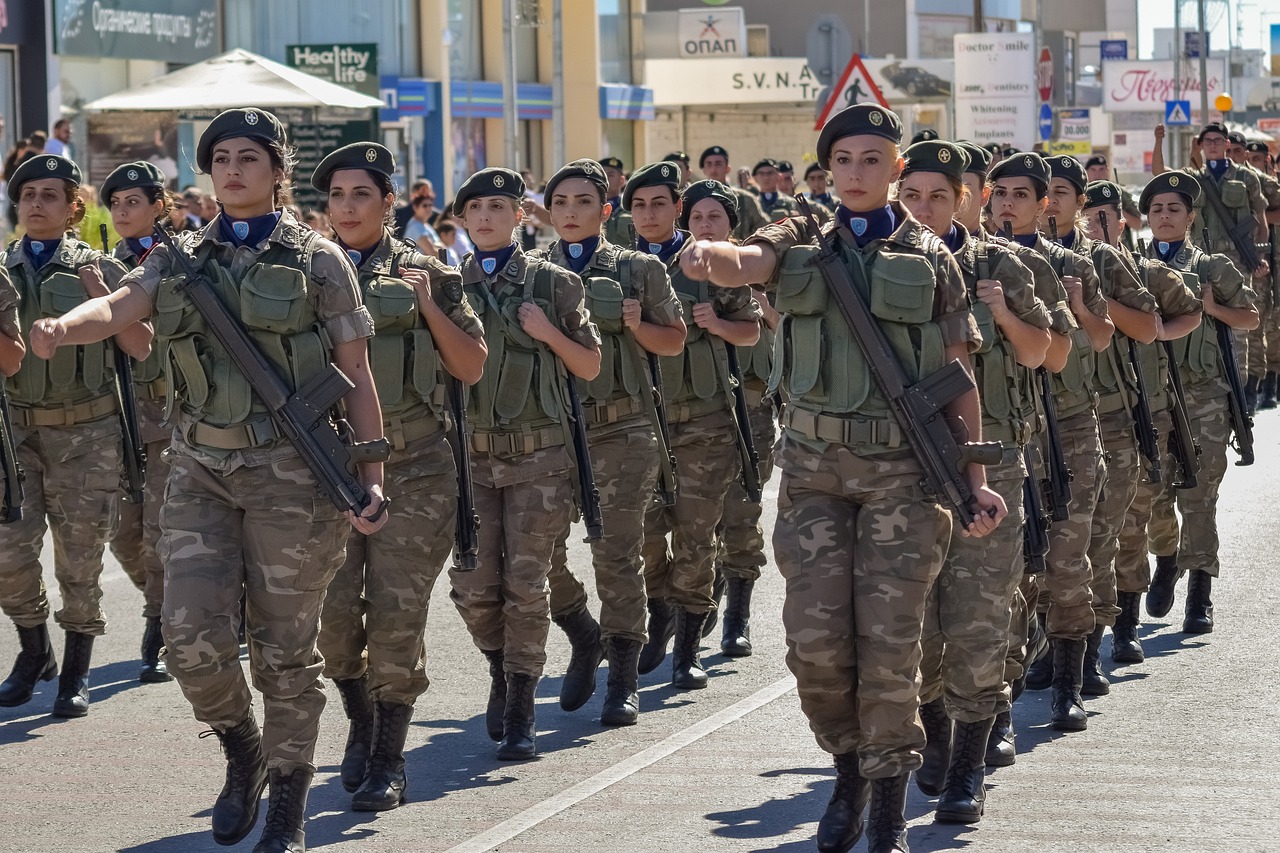
Surveillance UAVs
Surveillance UAVs, or Unmanned Aerial Vehicles, have become a cornerstone in modern military operations, especially in the realm of intelligence gathering and battlefield awareness. These high-tech flying machines are equipped with advanced sensors and cameras that allow them to capture real-time data from hostile environments, providing critical information that can influence strategic decisions. Imagine having an eye in the sky that can monitor enemy movements, track assets, and assess battlefield conditions without putting any human lives at risk. That's the power of surveillance UAVs!
One of the primary advantages of these UAVs is their ability to operate in areas that are too dangerous for human reconnaissance. They can fly at various altitudes, making them versatile in different terrains and weather conditions. This capability is particularly useful in situations where ground troops might face immediate threats, such as sniper fire or improvised explosive devices (IEDs). Surveillance UAVs can hover over a target area, capturing detailed images and video footage that can be transmitted back to command centers in real-time, allowing for informed decision-making.
Furthermore, surveillance UAVs are equipped with sophisticated technologies that enhance their operational effectiveness. These include:
- High-Resolution Cameras: These cameras can capture images with incredible detail, even from high altitudes, enabling military analysts to identify threats and monitor enemy positions accurately.
- Infrared and Night Vision: Surveillance UAVs can operate in low-light conditions, providing crucial intelligence during nighttime operations when visibility is limited.
- Signal Intelligence (SIGINT) Capabilities: Some UAVs can intercept and analyze enemy communications, providing insights into their plans and movements.
The integration of these technologies not only boosts the effectiveness of military operations but also enhances the safety of personnel on the ground. By utilizing surveillance UAVs, military forces can gather intelligence without exposing soldiers to unnecessary risks. This strategic advantage allows for better planning and execution of missions, ultimately leading to higher success rates.
Moreover, surveillance UAVs play a significant role in post-conflict assessments and humanitarian missions. After a conflict, they can be deployed to survey affected areas, helping to identify damage, assess the needs of the local population, and aid in recovery efforts. Their ability to collect data quickly and efficiently makes them invaluable tools in both military and civilian contexts.
As we look to the future, the evolution of surveillance UAVs is set to continue. With advancements in artificial intelligence and machine learning, these drones will become even more autonomous, capable of making real-time decisions based on the data they collect. This will not only enhance their effectiveness but also reduce the cognitive load on human operators, allowing them to focus on higher-level strategic planning.
In summary, surveillance UAVs are revolutionizing military operations by providing critical intelligence while ensuring the safety of personnel. Their advanced technologies and capabilities are essential for maintaining situational awareness in complex and hazardous environments, ultimately leading to more informed decisions and successful missions.
- What are the main functions of surveillance UAVs?
Surveillance UAVs are primarily used for reconnaissance, intelligence gathering, and monitoring enemy movements. They provide real-time data that aids in decision-making during military operations. - How do surveillance UAVs enhance safety for military personnel?
By performing reconnaissance missions from the air, surveillance UAVs minimize the need for ground troops to enter dangerous areas, thus reducing the risk of casualties. - What technologies are commonly found in surveillance UAVs?
Common technologies include high-resolution cameras, infrared and night vision capabilities, and signal intelligence systems that allow for comprehensive monitoring and data collection. - How is AI shaping the future of surveillance UAVs?
AI integration is expected to enhance the autonomy of surveillance UAVs, enabling them to make real-time decisions and adapt to changing environments without human intervention.
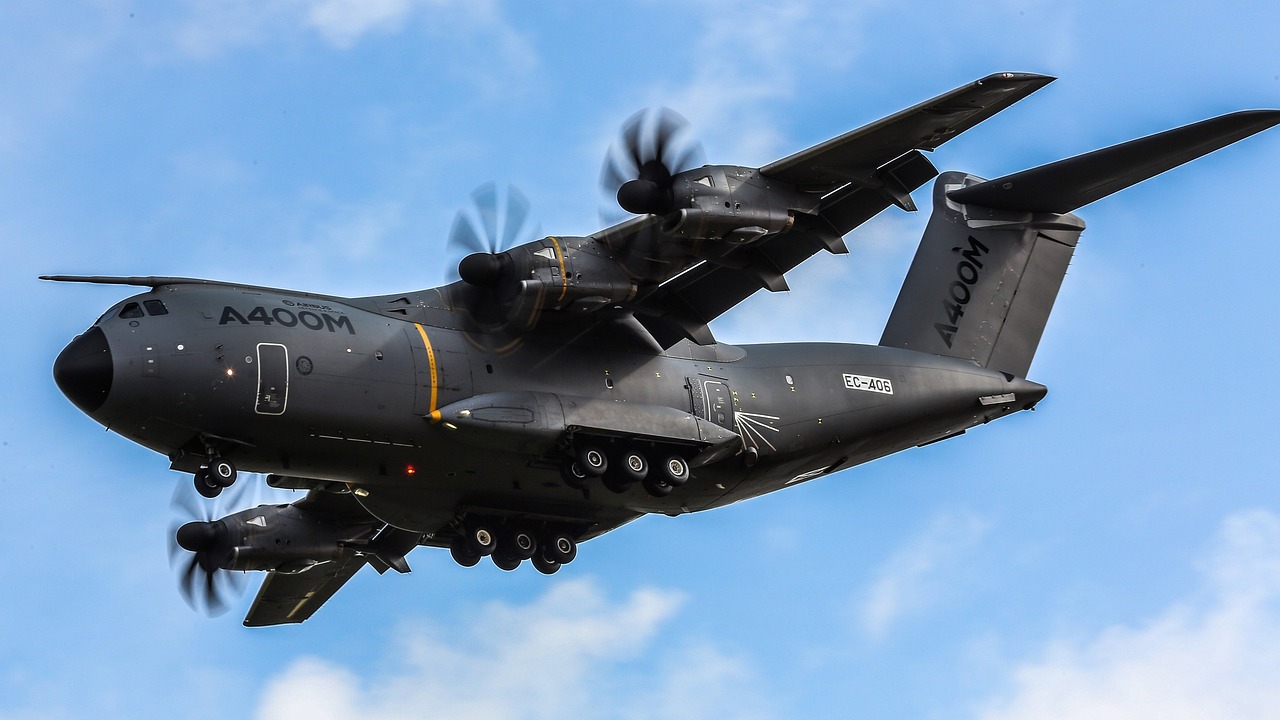
Ground Robots
Ground robots have become indispensable assets in modern military operations, particularly in hazardous environments where human presence poses significant risks. These robotic systems are designed to perform a variety of tasks, including bomb disposal, reconnaissance, and logistical support, all while minimizing danger to personnel. Imagine sending a robot into a potential minefield or a building suspected of housing explosives instead of risking a soldier's life. That's the power of ground robotics!
One of the primary roles of ground robots is in bomb disposal. Equipped with advanced sensors and manipulation tools, these robots can safely approach and neutralize explosive devices. For instance, the PackBot and Talons are popular choices in military operations, known for their agility and precision. They can navigate through rugged terrains and tight spaces, making them ideal for urban warfare scenarios. The ability to perform such critical tasks remotely not only saves lives but also allows for a more thorough and careful approach to handling dangerous materials.
In addition to bomb disposal, ground robots are also utilized for logistical support. They can transport supplies, ammunition, and medical equipment across challenging environments, ensuring that troops have what they need without putting human lives at risk. This capability is particularly crucial in combat zones where the threat of ambush or attack is high. By utilizing ground robots for logistics, military operations can maintain a steady supply chain while reducing the vulnerability of personnel.
Moreover, the design of these robots is tailored to withstand harsh conditions. Many ground robots come equipped with all-terrain capabilities, allowing them to traverse difficult landscapes that would hinder traditional vehicles. Their robust construction and advanced navigation systems enable them to operate effectively in various environments, whether it be sandy deserts, muddy fields, or urban ruins. This versatility makes them a valuable addition to any military operation.
As technology continues to advance, the functionality of ground robots is expected to evolve significantly. Future iterations may incorporate artificial intelligence to enhance their decision-making capabilities, allowing them to adapt to unforeseen challenges autonomously. Imagine a robot that can assess a situation, determine the safest route, and execute a mission without direct human input. This level of autonomy could revolutionize military operations, especially in high-risk environments.
In conclusion, ground robots are not just tools; they are vital components that enhance operational effectiveness while ensuring the safety of military personnel. Their ability to perform dangerous tasks, combined with their adaptability and resilience, makes them an essential part of modern warfare. As we look to the future, the integration of advanced technologies will undoubtedly expand their capabilities, making them even more crucial in hazardous environments.
- What are the main functions of ground robots in the military?
Ground robots primarily perform bomb disposal, logistics support, reconnaissance, and surveillance tasks. They are designed to operate in hazardous environments, minimizing risks to human personnel.
- How do ground robots enhance safety for military personnel?
By taking on dangerous tasks such as bomb disposal and logistics, ground robots reduce the need for soldiers to enter high-risk situations, thereby significantly lowering the potential for casualties.
- What advancements can we expect in ground robotics?
Future advancements may include enhanced artificial intelligence for better decision-making, improved navigation systems, and increased autonomy, allowing robots to operate effectively in complex environments without direct human control.
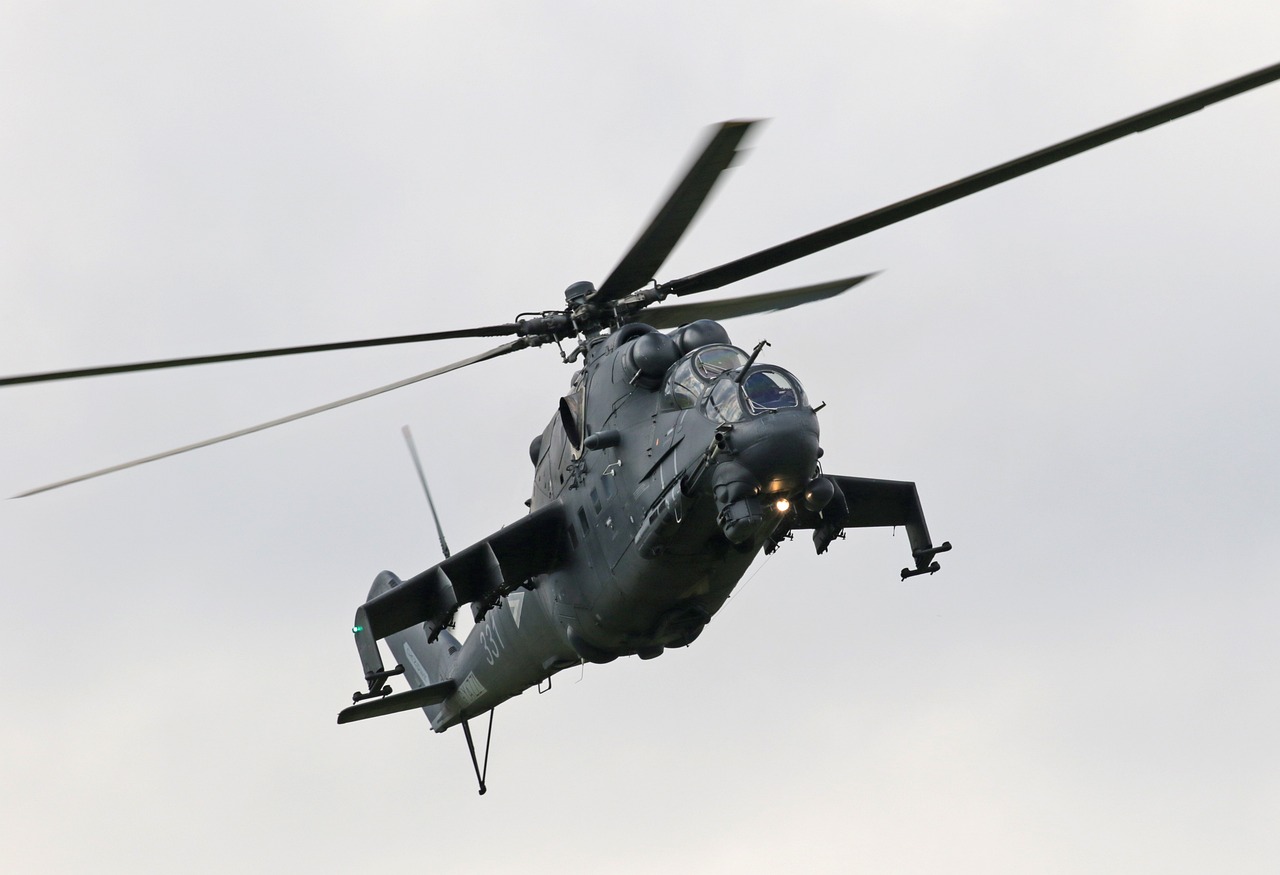
Benefits of Using Robotics
The integration of robotics into military operations brings a multitude of benefits that significantly enhance the effectiveness and safety of missions. One of the most compelling advantages is the increased safety for personnel. By deploying robots to perform dangerous tasks, such as bomb disposal or reconnaissance in hostile environments, the risk to human soldiers is greatly minimized. Imagine sending a robot into a minefield instead of a soldier; this not only preserves lives but also allows military personnel to focus on strategy and execution without the constant fear of injury. The introduction of robotic systems transforms the battlefield into a safer space for human operatives.
Furthermore, robotics contribute to operational efficiency. In today’s fast-paced military landscape, the ability to respond quickly and effectively is crucial. Robots can perform repetitive and hazardous tasks at a speed and precision that far exceed human capabilities. For example, logistics robots can transport supplies and equipment to frontline troops faster than traditional methods, ensuring that soldiers have the resources they need when they need them. This streamlining of processes not only enhances the speed of operations but also optimizes resource management, allowing military leaders to allocate their assets more effectively.
Another significant benefit is the improved mission success rates. With the ability to gather intelligence and conduct surveillance without putting personnel at risk, military operations become more informed and strategic. The data collected by unmanned aerial vehicles (UAVs) and ground robots can provide real-time insights into enemy movements, enabling commanders to make better decisions. As a result, the chances of achieving mission objectives increase, leading to a more effective military force overall.
In summary, the benefits of using robotics in military operations can be categorized as follows:
- Increased Safety for Personnel: Reduces the risk of casualties by taking on dangerous tasks.
- Operational Efficiency: Enhances speed and resource management through automation.
- Improved Mission Success Rates: Provides critical intelligence for better decision-making.
As technology continues to evolve, the role of robotics in military operations will undoubtedly expand, further enhancing safety and efficiency on the battlefield. The future looks bright as we explore the potential of these machines to transform military strategies and protect the lives of those who serve.
- What types of tasks can military robots perform?
Military robots can perform a variety of tasks, including reconnaissance, bomb disposal, logistics support, and surveillance. - How do robots enhance the safety of military personnel?
By taking on hazardous tasks, robots minimize the risk of injury or death to soldiers in dangerous environments. - What are the future trends in military robotics?
Future trends include advancements in artificial intelligence, machine learning, and the development of collaborative robots that work alongside human soldiers.
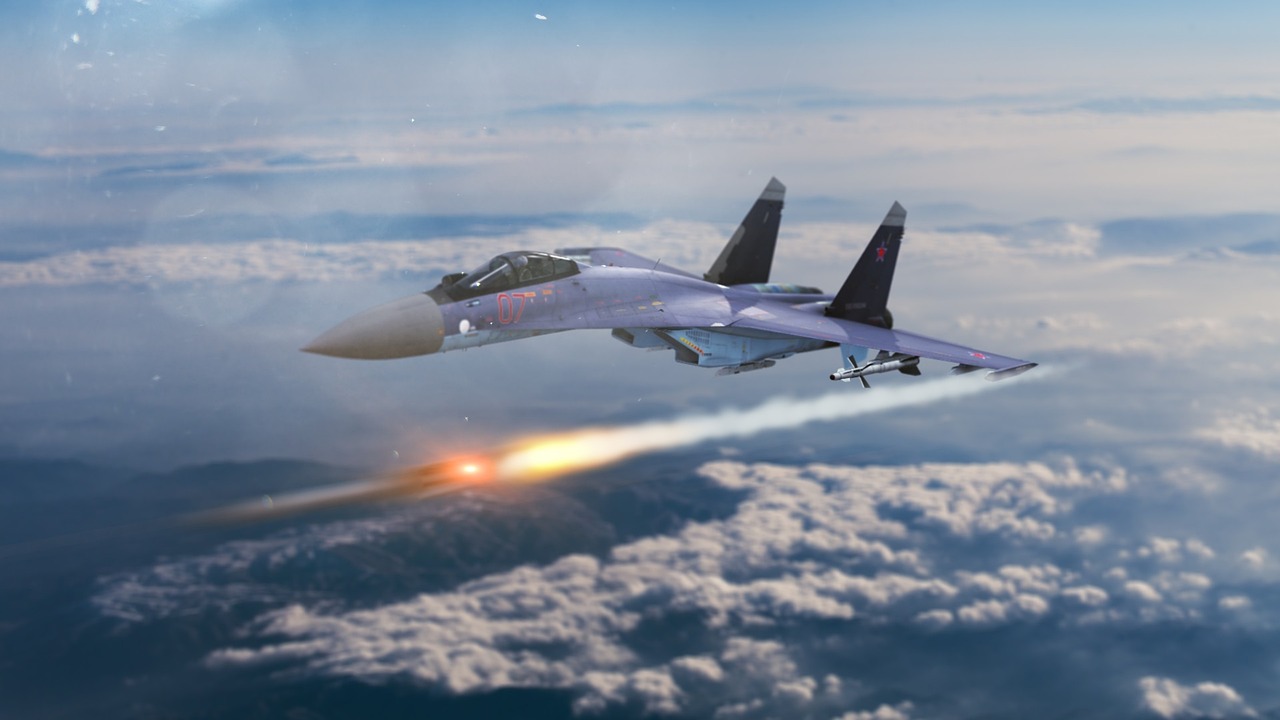
Increased Safety for Personnel
The integration of robotics into military operations has revolutionized the way dangerous tasks are approached, significantly enhancing safety for personnel. In combat zones, where the stakes are high and the environments are unpredictable, deploying robotic systems can mean the difference between life and death for human soldiers. Imagine sending a robot into a minefield to detect explosives instead of a soldier; this not only preserves human life but also increases the chances of mission success.
One of the most compelling aspects of using robotics is their ability to operate in environments that are hazardous to humans. For instance, when dealing with improvised explosive devices (IEDs), ground robots equipped with advanced sensors can safely neutralize threats without putting personnel at risk. This capability is crucial because it allows military operations to proceed with greater confidence, knowing that the most dangerous tasks are being handled by machines designed for such perilous conditions.
Furthermore, robotics can be deployed in search and rescue operations during conflict or natural disasters. For example, drones can quickly assess damage and locate survivors in areas that are too dangerous for human rescuers to enter. This rapid response not only saves lives but also provides critical information that can inform strategic decisions and resource allocation.
The safety benefits of military robotics can be summarized as follows:
- Risk Mitigation: Robots take on the most dangerous tasks, reducing the likelihood of casualties among soldiers.
- Enhanced Situational Awareness: Robotics equipped with cameras and sensors provide real-time data that help commanders make informed decisions.
- Psychological Safety: Knowing that robots can handle hazardous tasks allows soldiers to focus on their missions without the constant fear of life-threatening situations.
In conclusion, the use of robotics in military operations not only enhances safety for personnel but also improves overall mission effectiveness. As technology continues to advance, we can expect even greater innovations that will further protect our soldiers in the field.
- How do military robots improve safety for soldiers?
Military robots take on dangerous tasks such as bomb disposal and reconnaissance, reducing the risk of injury or death for human personnel. - What types of missions benefit from robotic technology?
Robotic technology is beneficial in various missions, including surveillance, logistics, and search and rescue operations. - Are there any ethical concerns regarding the use of military robots?
Yes, ethical concerns arise regarding decision-making in combat situations, particularly with autonomous systems.
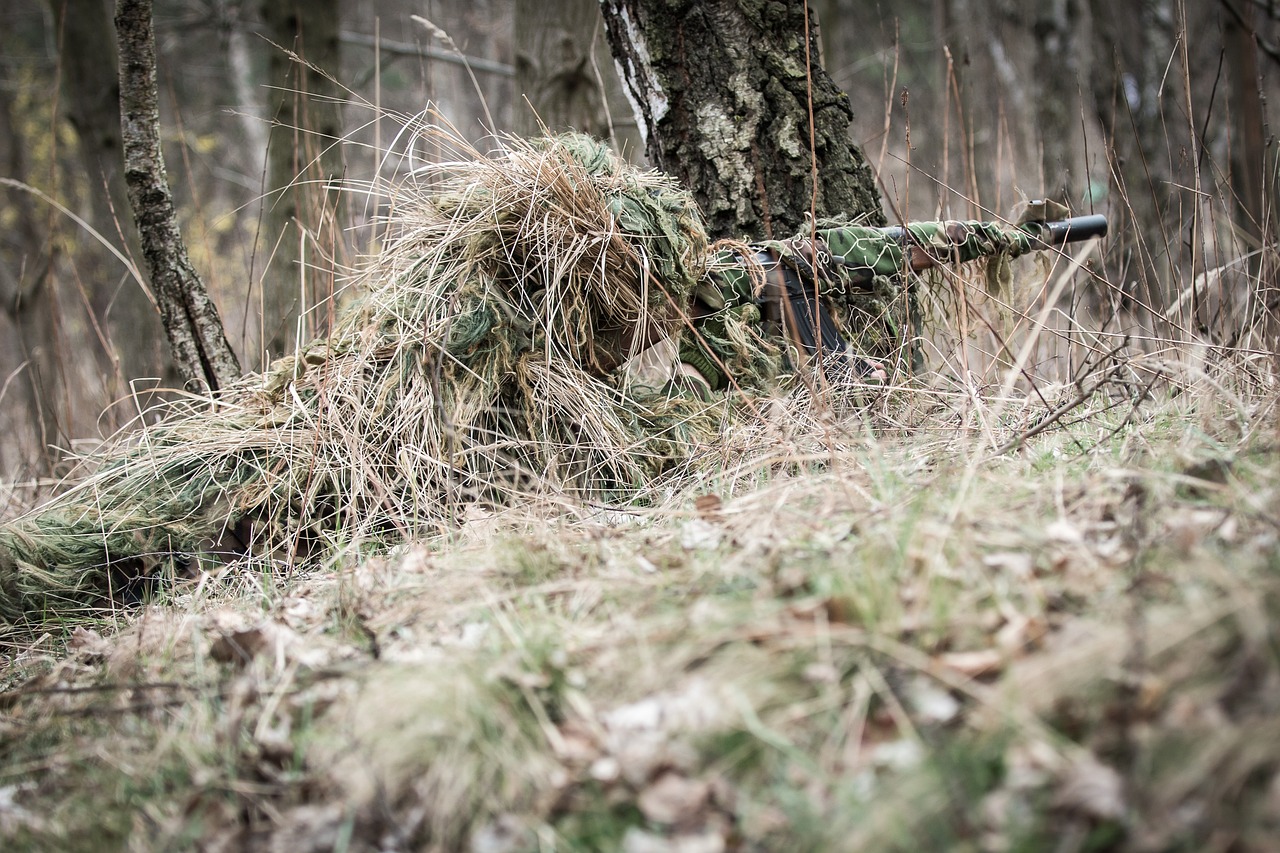
Operational Efficiency
When we talk about in military robotics, we’re diving into how these technological marvels can transform the way military operations are conducted. Imagine a scenario where missions are executed with precision and speed, where every second counts, and where the stakes are incredibly high. In this environment, robotics play a pivotal role. They not only enhance the speed of operations but also optimize resource management, allowing military personnel to focus on strategic decision-making rather than getting bogged down by mundane tasks.
One of the most significant advantages of employing robots in military operations is their ability to automate repetitive and dangerous tasks. For instance, consider logistics and supply chain management in a combat zone. Robots can efficiently transport supplies, conduct inventory checks, and even deliver essential equipment without putting human lives at risk. This automation leads to a streamlined process where resources are utilized more effectively, ultimately resulting in faster response times during critical situations.
Moreover, the integration of robotics allows for real-time data analysis and decision-making. Robots equipped with advanced sensors and communication systems can gather and relay information back to command centers almost instantaneously. This capability ensures that military leaders have access to the most current and accurate information, enabling them to make informed decisions quickly. With the right data at their fingertips, strategic planning becomes more effective, and the likelihood of mission success increases significantly.
Additionally, the combination of robotics and artificial intelligence (AI) is a game-changer for operational efficiency. AI algorithms can analyze vast amounts of data, identify patterns, and predict outcomes, which helps in optimizing mission strategies. For example, AI can assist in determining the safest routes for ground vehicles, predicting enemy movements, and even managing drone operations. This level of intelligence not only enhances the operational capacity of military forces but also reduces the chances of human error, which can be catastrophic in high-stakes environments.
In summary, the integration of robotics into military operations is not just about enhancing efficiency; it’s about revolutionizing the way we approach warfare. By automating tasks, improving data analysis, and leveraging AI, military robotics pave the way for a future where operations are safer, faster, and more effective. The potential for these technologies to change the landscape of military engagement is immense, and as advancements continue, we can only anticipate greater improvements in operational efficiency.
- How do military robots enhance safety for personnel?
Military robots take on dangerous tasks, such as bomb disposal and reconnaissance, significantly reducing the risk to human soldiers. - What are some examples of military robots?
Examples include unmanned aerial vehicles (UAVs), ground robots for logistics, and underwater drones for surveillance. - What challenges do military robotics face?
Challenges include technical limitations, ethical concerns regarding autonomous decision-making, and integration with existing military systems. - How does AI improve military robotics?
AI enhances decision-making, allows for real-time data analysis, and increases the adaptability of robots in complex environments.
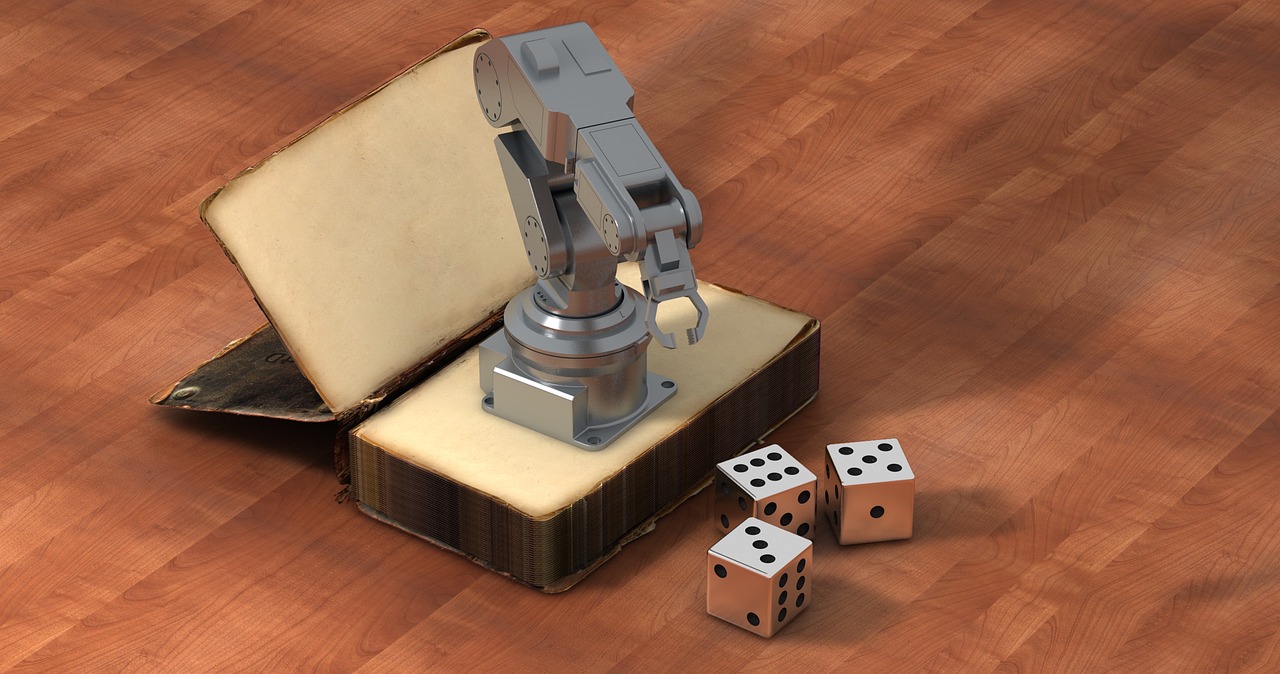
Challenges in Military Robotics
While the integration of robotics in military operations offers numerous advantages, it is essential to recognize the challenges that accompany this technological evolution. One of the primary hurdles faced by military robotics is technical limitations. These limitations can manifest in various forms, such as battery life, navigation accuracy, and communication reliability. For instance, a robot deployed in a remote area may struggle to maintain a stable connection with its operators, leading to potential mission failures. Additionally, the battery life of these machines often restricts their operational time, necessitating frequent recharges or replacements, which can be logistically challenging in combat zones.
Moreover, the ethical concerns surrounding the use of military robotics cannot be overlooked. As robots become increasingly autonomous, questions arise regarding their decision-making capabilities in combat situations. For example, if a robot is programmed to engage targets without human intervention, who is accountable for its actions? This dilemma raises significant moral implications about the nature of warfare and the potential for unintended consequences. The fear of machines making life-and-death decisions without human oversight adds a layer of complexity to the deployment of these technologies.
Another critical challenge lies in the integration issues that military organizations face when incorporating robotic systems into existing frameworks. The transition from traditional military operations to those that utilize advanced robotics requires extensive training and adaptation. Soldiers must not only learn how to operate these machines but also understand how to work alongside them effectively. This shift in dynamics can lead to resistance among personnel who may feel threatened by the presence of robots or unsure of their roles in a technology-driven environment.
To give a clearer understanding of these challenges, consider the following table that summarizes the key issues:
| Challenge | Description |
|---|---|
| Technical Limitations | Issues like battery life, navigation accuracy, and communication reliability affect operational effectiveness. |
| Ethical Concerns | Questions about accountability and decision-making in autonomous systems raise moral dilemmas. |
| Integration Issues | Challenges in adapting existing military frameworks to incorporate robotic systems effectively. |
In conclusion, while military robotics present an exciting frontier in modern warfare, it is crucial to address these challenges proactively. By investing in research and development, as well as fostering open discussions about the ethical implications of these technologies, military organizations can mitigate risks and enhance the effectiveness of their robotic systems. The future of military operations will undoubtedly be shaped by how well we navigate these challenges.
- What are the main challenges faced by military robotics? The primary challenges include technical limitations, ethical concerns, and integration issues.
- How do technical limitations affect military robots? Technical limitations can hinder battery life, navigation accuracy, and communication, impacting operational effectiveness.
- What ethical concerns arise from the use of military robotics? Ethical concerns revolve around accountability and decision-making in autonomous systems, raising moral dilemmas in warfare.
- How can military organizations address the integration issues of robotics? By investing in training and development, and fostering discussions about the role of robots in military operations.
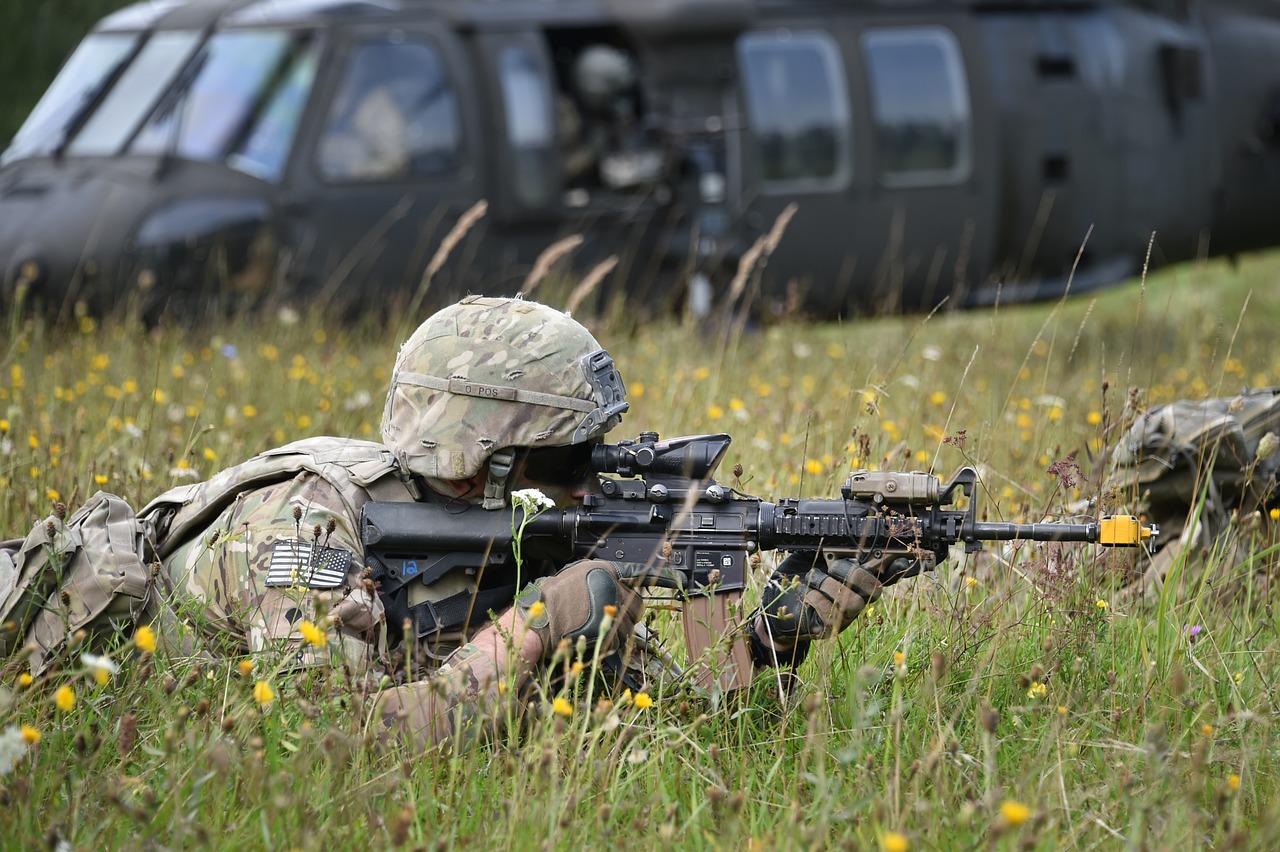
Technical Limitations
The integration of robotics into military operations has opened up a world of possibilities, but it’s not without its . One of the primary challenges faced by military robots is their battery life. Many robotic systems are required to operate for extended periods in hostile environments, and a short battery life can severely restrict their operational capabilities. Imagine a drone that can only fly for a couple of hours before needing a recharge; that’s not exactly ideal when you’re trying to gather intelligence in enemy territory.
Another significant hurdle is navigation. While advancements in GPS and mapping technologies have improved the ability of robots to navigate complex terrains, they still struggle in environments with poor satellite coverage or when faced with obstacles that aren’t represented in their maps. For instance, a ground robot designed for bomb disposal might find itself in a situation where it can’t accurately assess the safest route due to unexpected debris or changes in the landscape.
Moreover, communication issues can arise, particularly in remote areas where signals may be weak or non-existent. Military operations often require real-time data sharing between robots and human operators, and any disruption in communication can lead to critical delays. Imagine coordinating an airstrike or a ground assault where the robots lose contact with the command center—this could lead to disastrous consequences.
To illustrate these technical limitations more clearly, consider the following table that summarizes the key challenges faced by military robotics:
| Technical Limitation | Description |
|---|---|
| Battery Life | Limited operational time affects mission duration and effectiveness. |
| Navigation | Difficulties in traversing complex terrains and avoiding obstacles. |
| Communication | Challenges in maintaining real-time data exchange, especially in remote areas. |
In addition to these challenges, military robots must also contend with the ever-evolving landscape of technology. As new threats emerge, so too must the capabilities of these robotic systems. This means that continuous upgrades and innovations are necessary to keep pace with modern warfare. However, this raises questions about the sustainability of such advancements. Can military budgets keep up with the rapid pace of technological change? Or will we see a plateau in capabilities due to financial constraints?
Ultimately, while the potential of robotics in military operations is immense, addressing these technical limitations is crucial for their successful deployment in hazardous environments. Overcoming these challenges will not only enhance the effectiveness of military robots but also ensure the safety of personnel operating in dangerous situations.
- What are the main technical limitations of military robots?
Military robots face challenges such as battery life, navigation difficulties, and communication issues, which can hinder their operational effectiveness. - How does battery life affect military robotics?
A limited battery life restricts the duration for which a robot can perform its tasks, impacting mission success. - Why is navigation a challenge for military robots?
Robots may struggle to navigate complex terrains or avoid obstacles, especially in environments with poor satellite coverage. - What role does communication play in military robotics?
Real-time communication is essential for coordinating operations, and any disruptions can lead to critical delays in mission execution.
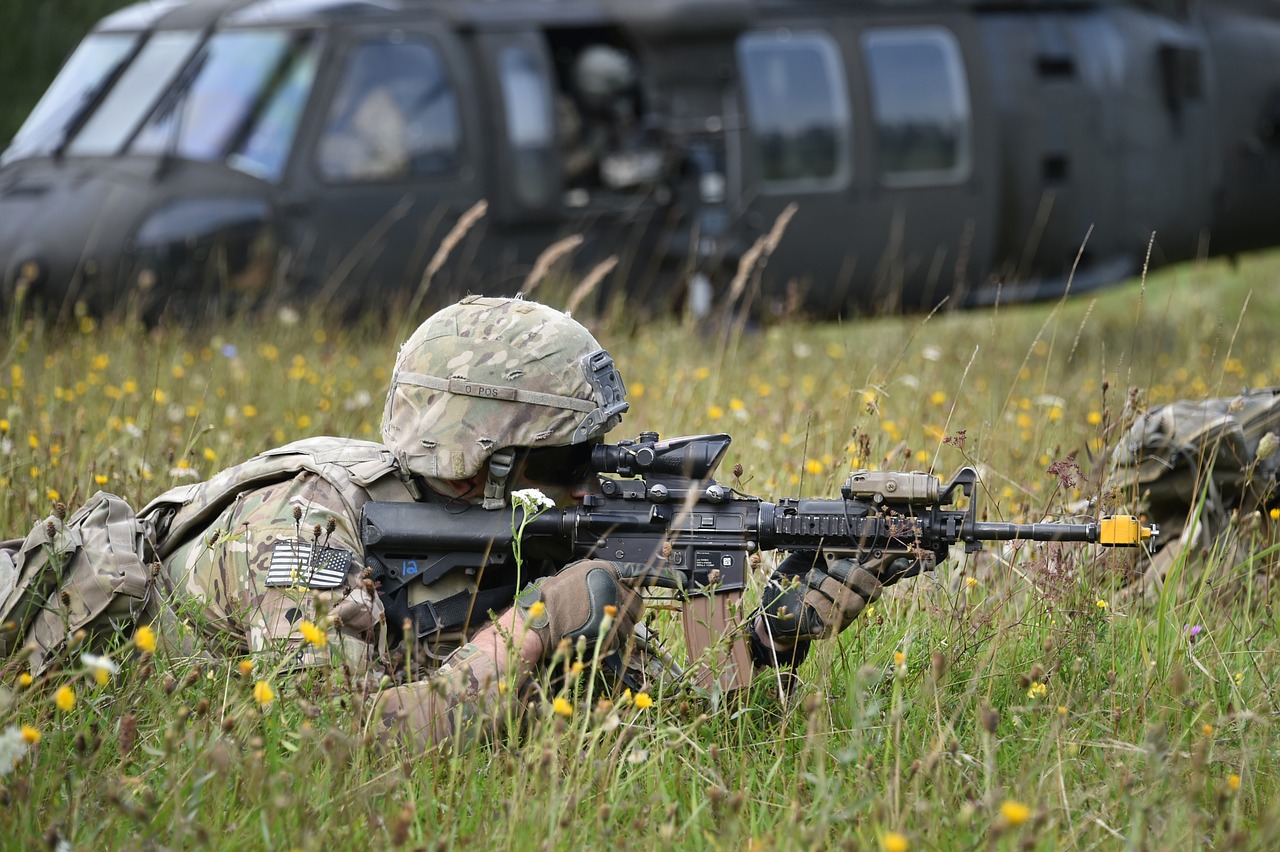
Ethical Concerns
The integration of robotics into military operations raises profound that cannot be ignored. As we stand on the brink of a new era in warfare, where machines may make life-and-death decisions, we must ask ourselves: who is responsible for the actions of these autonomous systems? The potential for robots to engage in combat without human oversight presents a dilemma that challenges our understanding of accountability and morality in warfare.
One of the most pressing issues is the question of autonomous decision-making. When a robot is programmed to identify and engage targets, it operates based on algorithms that may not fully encompass the complexities of human ethics. Can a machine truly differentiate between combatants and non-combatants? The risk of civilian casualties increases when machines are left to make such critical decisions. This is not just about technology; it’s about the moral implications of delegating life-and-death choices to a machine.
Moreover, the lack of transparency in how these robots are programmed raises further ethical questions. If a drone strikes a target based on its programming, who is held accountable for that decision? The programmer? The military commander? Or is it the machine itself? This ambiguity can lead to a dangerous precedent where the lines of responsibility are blurred, potentially resulting in unjust actions without recourse for victims.
Another concern is the potential for misuse of military robotics. As these technologies become more accessible, there is a risk that they could fall into the hands of rogue states or non-state actors. The proliferation of robotic warfare could lead to an arms race, where nations are compelled to develop increasingly advanced and lethal robotic systems to maintain their military edge. This scenario could destabilize global security and lead to unintended escalations in conflict.
In light of these concerns, it becomes essential to establish ethical guidelines for the use of military robotics. These guidelines should address issues such as:
- Accountability: Defining who is responsible for decisions made by autonomous systems.
- Transparency: Ensuring that the algorithms and decision-making processes of military robots are open to scrutiny.
- Human Oversight: Maintaining a level of human control over critical decisions, especially those involving the use of lethal force.
As we move forward, it’s crucial for military leaders, ethicists, and technologists to engage in ongoing dialogue about these issues. The future of warfare is not just about technological advancement; it’s about ensuring that our moral compass guides the development and deployment of these powerful tools. Only by addressing these ethical concerns can we hope to navigate the complex landscape of modern military operations responsibly.
- What are the main ethical concerns surrounding military robotics? The main concerns include autonomous decision-making, accountability, lack of transparency, and potential misuse of technology.
- How can we ensure accountability for actions taken by military robots? Establishing clear guidelines for accountability and maintaining human oversight in critical decisions are essential steps.
- What role do ethical guidelines play in military robotics? Ethical guidelines help navigate the moral implications of using robots in warfare, ensuring that technology is used responsibly and justly.
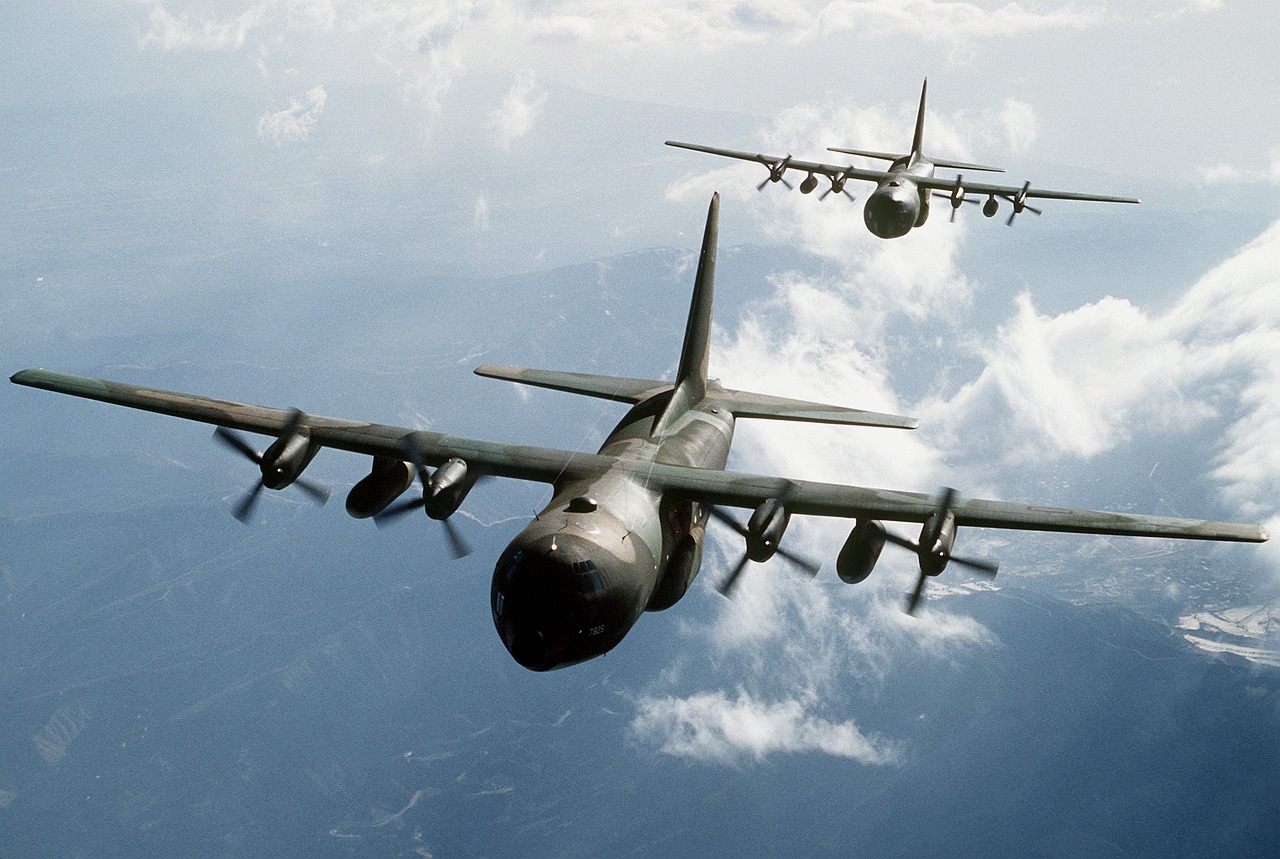
Future Trends in Military Robotics
The future of military robotics is not just a concept; it's an evolving reality that promises to reshape how armed forces operate in hazardous environments. With the rapid advancements in technology, particularly in artificial intelligence and machine learning, military robots are becoming more capable, versatile, and integral to strategic operations. Imagine a battlefield where robots can analyze data in real-time, make decisions, and collaborate with human soldiers seamlessly. This is not science fiction; it’s where we’re headed.
One of the most exciting trends is the integration of artificial intelligence into military robotics. AI can enhance a robot's decision-making capabilities, allowing it to adapt to unpredictable situations on the ground. For instance, a UAV equipped with AI can autonomously navigate complex terrains, avoiding obstacles while gathering critical intelligence. This not only improves the efficiency of missions but also significantly reduces the cognitive load on human operators, allowing them to focus on strategic planning rather than micromanaging robotic systems.
Moreover, the development of collaborative robots, or cobots, is making waves in military operations. These robots are designed to work alongside human soldiers, enhancing teamwork and operational effectiveness. For example, in a bomb disposal scenario, a cobot can assist a soldier by providing real-time data analysis, thus allowing the soldier to make informed decisions quickly. The synergy between human and robot can lead to safer missions, as the cobot can take on the most dangerous tasks, minimizing the risk to human life.
Additionally, we can expect to see advancements in swarm robotics, where multiple robots work together to achieve a common goal. This concept draws inspiration from nature, much like how a swarm of bees operates. In military applications, a swarm of drones could be deployed to cover vast areas for reconnaissance, providing a comprehensive view of the battlefield while significantly reducing the chances of detection by enemy forces. The ability to coordinate and communicate effectively among multiple units could revolutionize how military operations are conducted.
As we look ahead, the incorporation of augmented reality (AR) and virtual reality (VR) technologies into military robotics is another trend to watch. These technologies can provide soldiers with enhanced situational awareness and training capabilities. For instance, AR can overlay critical information onto a soldier's field of view, allowing them to visualize data from drones or ground robots in real-time. This integration can lead to more informed decision-making, ultimately improving mission outcomes.
However, with these advancements come challenges. As military robotics become more autonomous, ethical considerations regarding their use in combat will need to be addressed. Questions around accountability, decision-making in life-and-death situations, and the potential for unintended consequences will be at the forefront of discussions among military leaders and policymakers. Balancing technological innovation with ethical responsibilities will be crucial as we forge ahead into this new era of military operations.
- What are military robots used for? Military robots are used for various applications, including reconnaissance, bomb disposal, supply logistics, and combat support.
- How does AI improve military robotics? AI enhances military robots by enabling them to make autonomous decisions, adapt to changing environments, and analyze data more efficiently.
- What are collaborative robots? Collaborative robots, or cobots, are designed to work alongside human soldiers, assisting them in tasks and improving overall operational effectiveness.
- What are the ethical concerns surrounding military robotics? Ethical concerns include accountability for decisions made by autonomous systems, the potential for misuse, and the implications of robots in combat scenarios.
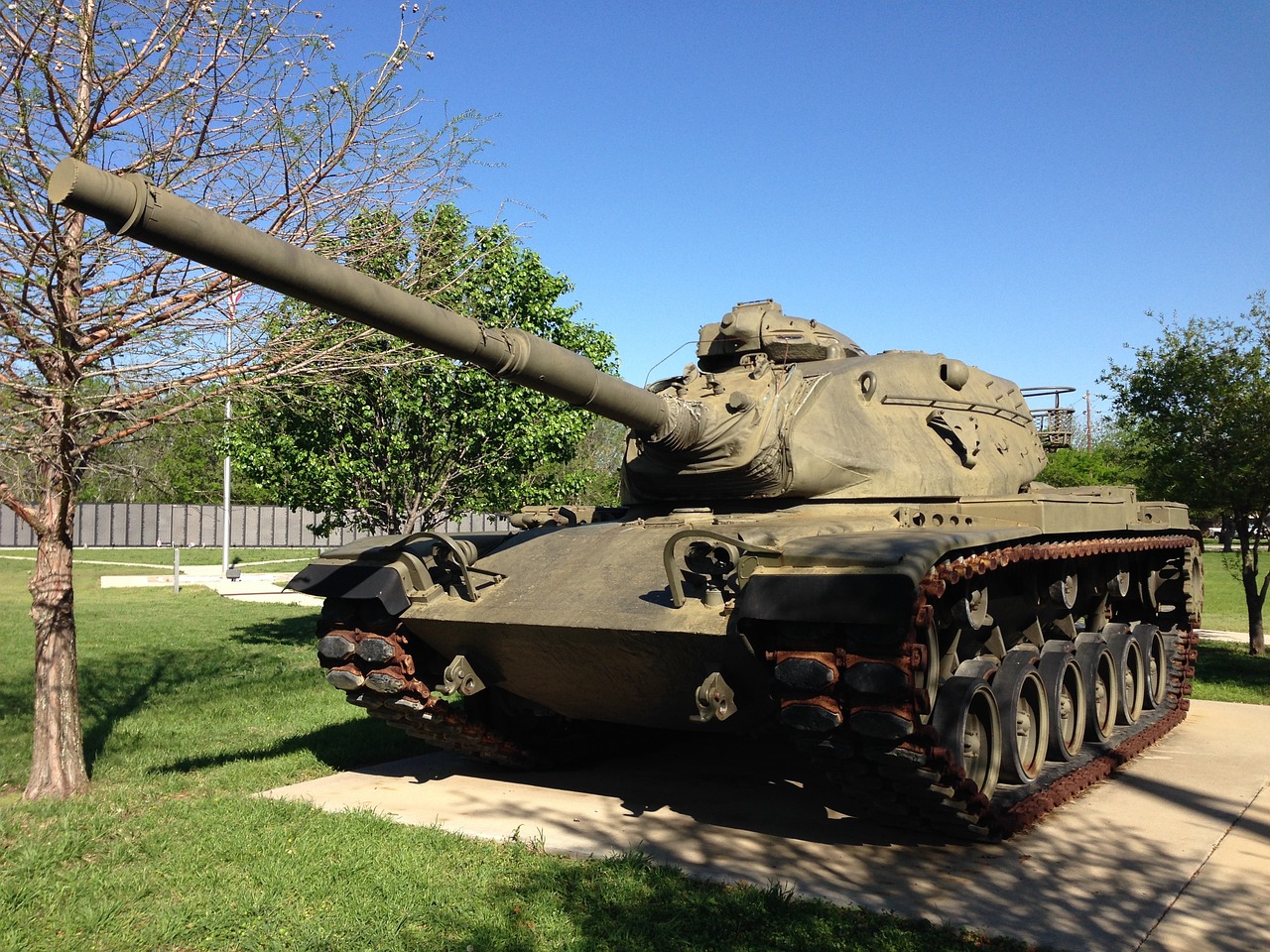
AI Integration
The integration of artificial intelligence (AI) into military robotics is not just a futuristic vision; it’s rapidly becoming a reality that is reshaping the battlefield. Imagine a world where robots can analyze vast amounts of data in real-time, making split-second decisions that could save lives. This is what AI brings to the table, enhancing the capabilities of military robots beyond mere automation. With AI, these machines can learn from their environments, adapt to changing situations, and even predict potential threats before they occur.
One of the most significant advantages of AI in military robotics is its ability to improve decision-making. For instance, in reconnaissance missions, AI algorithms can process images and recognize patterns that human operators might miss. This capability allows for more accurate assessments of enemy positions and movements, leading to better strategic planning. Moreover, AI can help in autonomous navigation, enabling robots to traverse complex terrains without human intervention. This not only increases the efficiency of missions but also drastically reduces the risk to soldiers.
Furthermore, AI integration allows for enhanced adaptability in unpredictable environments. Robots equipped with AI can analyze their surroundings and make real-time adjustments to their operations. For example, if a ground robot encounters an obstacle, it can autonomously determine the best route around it, ensuring that missions continue smoothly without the need for human input. This level of autonomy is crucial in hazardous situations where human presence is risky or impossible.
However, the incorporation of AI into military robotics does raise some questions regarding ethics and control. As these systems become more autonomous, the line between human decision-making and machine intelligence blurs. Military leaders must grapple with the implications of allowing robots to make critical decisions, especially in life-or-death situations. The balance between leveraging AI for operational effectiveness and maintaining ethical oversight is a delicate one that requires ongoing dialogue and regulation.
In summary, the integration of AI into military robotics is a game changer. It enhances decision-making, improves operational efficiency, and increases adaptability in the face of unpredictable challenges. As technology continues to advance, the military's use of AI-powered robots will likely expand, paving the way for safer and more effective operations in hazardous environments.
- What is the role of AI in military robotics?
AI enhances the capabilities of military robots by improving decision-making, enabling autonomous navigation, and allowing for adaptability in complex environments. - Are there ethical concerns regarding AI in military applications?
Yes, the use of AI raises questions about decision-making in combat situations, particularly regarding the moral implications of autonomous systems. - How does AI improve operational efficiency in military missions?
AI allows for quicker data analysis and decision-making, enabling military robots to respond faster to threats and streamline processes. - Can AI-powered robots operate independently?
Yes, many AI-powered robots can operate autonomously, making real-time decisions based on their environment.
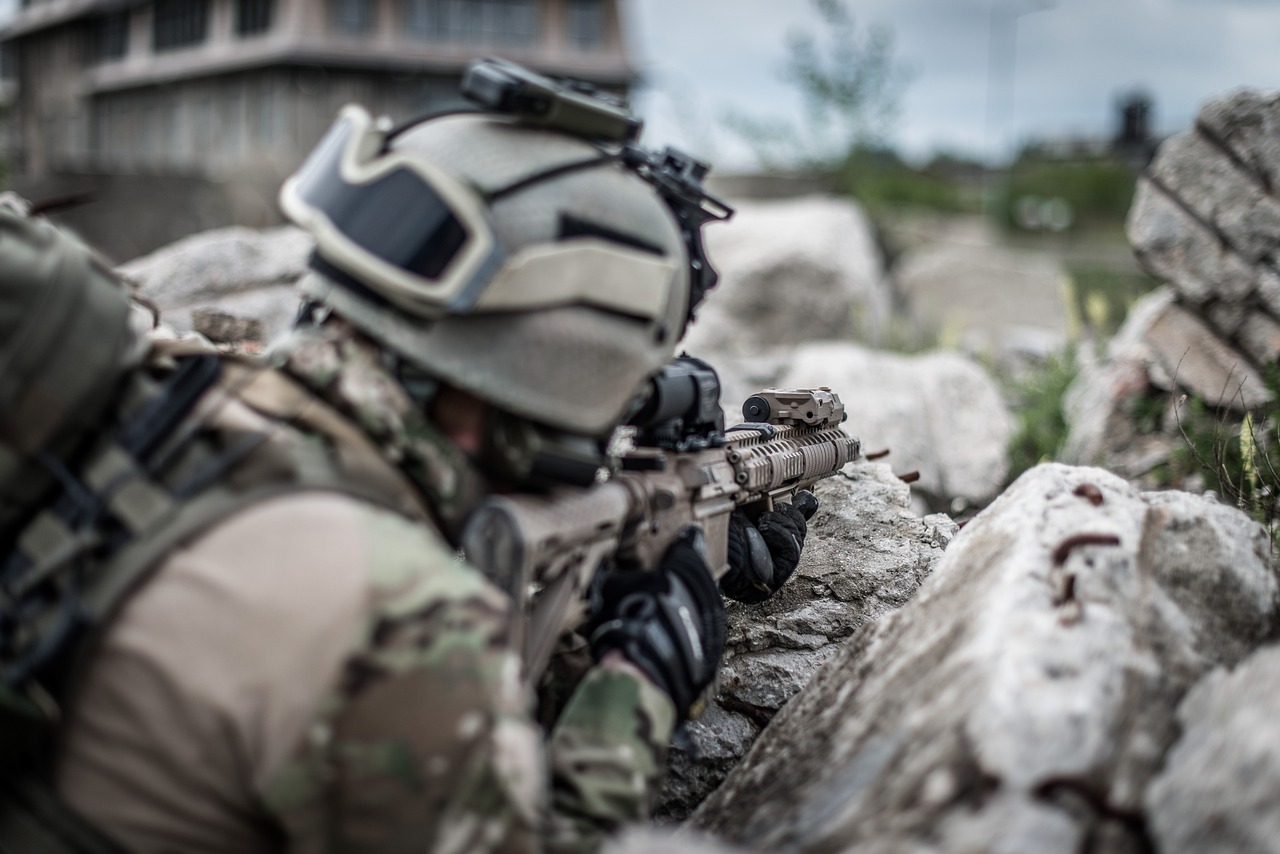
Collaborative Robots
In the ever-evolving landscape of military operations, , often referred to as cobots, are becoming indispensable allies for human soldiers. Imagine a scenario where soldiers are equipped with robotic partners that not only assist in high-risk tasks but also enhance their capabilities in real-time. These robots are designed to work alongside humans, sharing the workload and allowing for a more cohesive and efficient operational environment.
One of the most significant advantages of cobots is their ability to adapt and respond to the needs of their human counterparts. For instance, during a reconnaissance mission, a cobot can carry heavy equipment, allowing soldiers to maintain mobility and focus on their surroundings. This synergy between humans and robots not only boosts morale but also increases overall mission effectiveness. The integration of cobots into military operations allows for:
- Enhanced Communication: Cobots can relay real-time data to soldiers, improving situational awareness.
- Increased Efficiency: By taking over repetitive or dangerous tasks, cobots free up soldiers to concentrate on strategic decision-making.
- Improved Safety: Cobots can enter hazardous areas first, assessing dangers before human personnel follow.
Moreover, the design of collaborative robots emphasizes safety and ease of use. Unlike traditional military robots that often operate in isolation, cobots are equipped with advanced sensors and artificial intelligence, enabling them to recognize human presence and adjust their actions accordingly. This feature is particularly crucial in chaotic environments where split-second decisions can mean the difference between life and death.
As we look to the future, the potential for cobots in military applications is vast. With advancements in AI and machine learning, these robots are becoming more intuitive and capable of performing complex tasks autonomously. For example, they could assist in logistics by managing supply chains or even performing basic maintenance on equipment in the field. The possibilities are endless, and as technology continues to advance, the collaboration between humans and robots is set to redefine the landscape of military operations.
- What are collaborative robots? Collaborative robots, or cobots, are designed to work alongside humans, enhancing their capabilities and improving efficiency in various tasks.
- How do cobots improve military operations? Cobots enhance military operations by increasing safety, improving communication, and allowing soldiers to focus on strategic decision-making.
- What technologies enable cobots to work safely with humans? Cobots are equipped with advanced sensors and AI, allowing them to recognize human presence and adjust their actions to ensure safety.
- What is the future of cobots in the military? The future of cobots in the military looks promising, with advancements in AI and machine learning leading to more intuitive and capable robots that can perform complex tasks autonomously.
Frequently Asked Questions
- What are the main applications of military robotics?
Military robotics are used in various applications such as reconnaissance, bomb disposal, and logistics. These technologies greatly enhance operational effectiveness while minimizing risks to human personnel in dangerous situations.
- What types of military robots are commonly used?
Military robots come in several forms, including unmanned aerial vehicles (UAVs), ground vehicles, and underwater drones. Each type has specific roles, from surveillance and reconnaissance to bomb disposal and logistical support.
- How do UAVs contribute to military operations?
UAVs play a crucial role in surveillance and reconnaissance missions. They provide real-time intelligence, enhance situational awareness, and can operate in hostile territories without risking human lives.
- What are the benefits of using robotics in military operations?
The integration of robotics offers numerous benefits, including increased safety for personnel, enhanced operational efficiency, and improved mission success rates. Robots take on dangerous tasks, allowing human soldiers to focus on strategic decision-making.
- What challenges do military robotics face?
Despite their advantages, military robotics encounter several challenges, such as technical limitations, ethical concerns regarding autonomous decision-making, and integration issues with existing military systems.
- How does artificial intelligence enhance military robotics?
Integrating artificial intelligence into military robotics significantly improves their capabilities. AI advancements enable better decision-making, increased autonomy, and adaptability in complex and dynamic environments.
- What are collaborative robots and how do they function in military settings?
Collaborative robots, or cobots, are designed to work alongside human soldiers. They enhance teamwork and operational effectiveness, making military missions safer and more efficient by assisting in various tasks.




